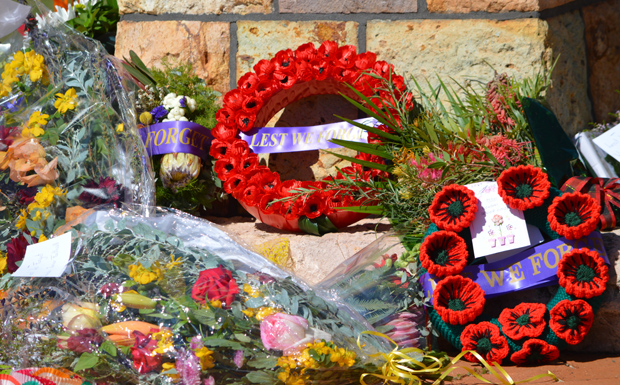
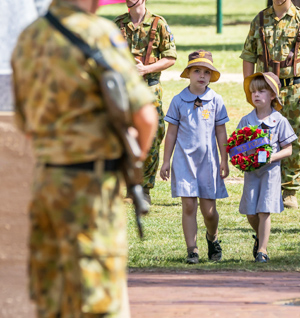
(Photo: Howard Jack)
April 27, 2017
South Burnett residents turned out in towns big and small throughout the region on Anzac Day to honour the sacrifice of Australia’s war veterans.
Almost every town had a ceremony of some sort in the morning, with many having multiple events, including gunfire breakfasts, cemetery pilgrimages, Dawn Services and parades.
As well as the events listed below, Anzac Day commemorations were also held – at least – at Blackbutt, Boondooma, Kumbia and Widgee.
At Wondai’s morning commemoration, local resident Wally Knight was the guest speaker.
His talk from the podium aimed to get his listeners to ponder deeply the tragedy that Australia suffered during World War I.
His words are about Wondai township, but the experience he describes were experienced by just about every small town in the country:
* * *
by Wally Knight
I believe that on this Anzac Day we should reflect on what our local contribution was to the Great War.
Prior to the outbreak of World War I, Wondai township had population of at least 855 with a further 808 living and working in the district.
There was a great diversity of occupations such as wheelwrights, tinsmiths, teamsters, brickmakers and a healthy selection of farmers and graziers.
The first rush of volunteers in 1914 saw journalists, bakers, house painters, farriers, blacksmiths, labourers and railway employees and a fairly healthy number of men who had previously served in the Boer War join the Australian Imperial Force, and a little later on school teachers, bankers, and even more labourers enlisted.
By 1917, 250 people had enlisted from the town and district. By then there had been 12 killed in action or died of wounds and another 39 wounded in the Gallipoli and Somme campaigns of 1915 and 1916.
At the beginning of 1917 victory seemed nowhere in sight although hopes were raised when it was discovered that the Germans were straightening their line out by a withdrawal to the Hindenburg Line in February and March 1917.
During this withdrawal, and in the Australian follow up, five Wondai men were killed and another 10 wounded.
One Wondai man, James Shannon, was awarded the Military Medal for his work as a stretcher bearer under heavy fire during which he saved many lives.
Another Wondai man, Alf Armstrong, was also awarded a Military Medal for rushing an enemy machinegun post that was holding up his company’s advance.
It was against the solid defences of the Hindenburg Line that four Australian divisions were thrown during April and May.
The first attack at Bullecourt on April 10-11 was unsupported by artillery and although the Australians broke into the Hindenburg Line they were soon shot out of it.
In this fight, which cost the Australians 3000 casualties, Wondai lost three killed, three wounded and two prisoners of war. Also during this fighting James Shannon was awarded the Distinguished Conduct Medal for his outstanding bravery as a stretcher bearer.
A second attempt to break through on May 3-15 saw the Australians there to stay after hard fighting, although at a cost 7000 casualties of whom eight wounded were from Wondai.
The battle of Messines followed.
It opened on June 7 with the explosion of 19 mines, the noise of which was heard across the English Channel and was the largest planned detonation until the advent of the atom bomb.
British, New Zealand and Australian troops advanced to the devastated ridge and in spite of the stunning blow suffered by the Germans it took another four days of strenuous fighting to secure the gains made and another six weeks before a new front line was consolidated for a cost altogether for the Australians of 6000 casualties, of whom Wondai had four killed with another 10 wounded.
When the Third Battle of Ypres opened on July 31 it did so in fine weather but before it had gone far the weather broke and turned the battlefield into a quagmire which then stalled any prospect of early success.
The Australians came onto the battlefield on September 20 but before they got there four Wondai men were killed and another six had been wounded by the German artillery when they moved into the reserve before going into the line.
In three successive battles on the Menin Road, Polygon Wood and Broodseinde, the Australians steadily drove the Germans back to the top of the Passchendaele Ridge, and then the weather broke once more and the battlefield again became a quagmire.
By then sheer exhaustion meant that any further attacks became hopeless. The last of the Australians were withdrawn on November 14 by which time they had suffered 38,000 casualties in eight weeks. In that time, Wondai had another five killed or died of wounds and 23 wounded.
It wasn’t until well into 1918 that well-planned co-ordinated attacks by the allies began to achieve results on the Western Front. This was achieved at a cost to Wondai and district of a further 15 killed or died of wounds and 49 wounded in action.
In Palestine in 1917, 19 men from Wondai served chiefly in the 2nd and 5th Light Horse regiments or with the Service Corps. Two were wounded at the First Battle of Gaza.
The men were in continual action during the Second Battle of Gaza and then the Third Battle in October finally turned the Turks out of their stronghold.
At least one Wondai light horseman was in the famous charge at Beersheba with the 11th Light Horse, while the others fought through the protracted battle there to oust the Turks which opened the way to the capture of Jerusalem in December.
Wondai needs to be proud of its effort in World War I.
Nearly 300 volunteered and of these 48 were killed in action or died of their wounds and another 150 were wounded. Another five were made prisoners of war and a further seven died of other causes.
You don’t need to be much of a mathematician to work out that this was a very high price for a small community to pay.
* * *
Cherbourg
Cherbourg’s Anzac Day commemorations began with a traditional smoking ceremony and a march to the war memorial.
Residents gathered to say prayers and lay wreaths, while members of the Cherbourg Junior Rangers solemnly placed crosses on the Memorial bearing the names of the “Boys From Barambah”.
Students from St Mary’s Catholic College and Cherbourg State School also took part.
The song, “Boys From Barambah” – written by Robert “Rocko” Langton to honour Cherbourg’s World War I soldiers – was also played during the commemoration.

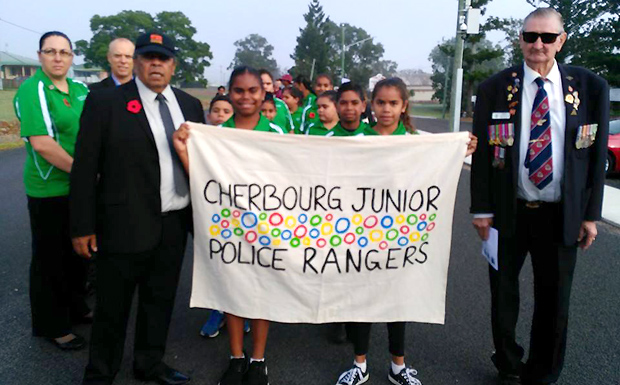
* * *
Hivesville
Hivesville residents had an early start on Anzac Day, gathering at 5:30am at the Memorial in the Main Street for the traditional Dawn Service.
This was followed by a community breakfast in Anzac Park opposite the Hivesville Hotel
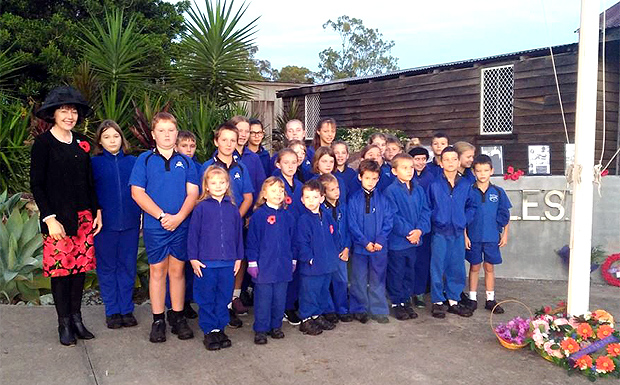
* * *
Kingaroy
Kingaroy’s annual Anzac Day Observance in Memorial Park drew an estimated 2000 people this year.
They sat under tents or stood in the shade of trees for the ceremony, which began with the arrival of a parade from Kingaroy RSL at 11:00am and lasted until noon.
This year’s special guest, RAN Captain Jenny Daetz, gave a moving address about “Australia’s Darkest Hour” during World War II, the year 1942.
She reminded the audience that Pearl Harbour had been bombed less than a month before New Year’s Day, and Darwin was bombed on February 19, which effectively put the war on the nation’s doorstep.
At that time, Australia had lost many of its naval ships and hundreds of seamen, and the Japanese appeared to be invincible at sea.
But just three months later at the Battle Of The Coral Sea, the allies won a significant naval victory which ultimately turned the tide of the Pacific War, although not without intensive fighting by Australian troops, who were supported by factory and Land Army workers back at home.
“They called them the Heroic Generation and we owe them the freedoms we enjoy today,” Captain Daetz said.
“We should never forget them and the sacrifices they made at home and abroad.”


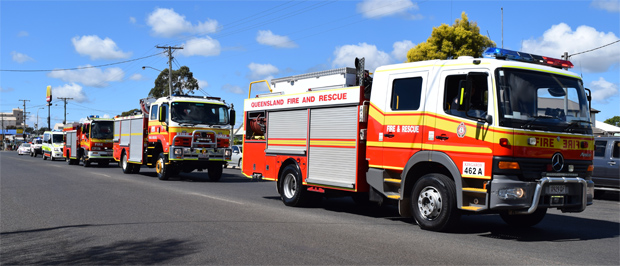
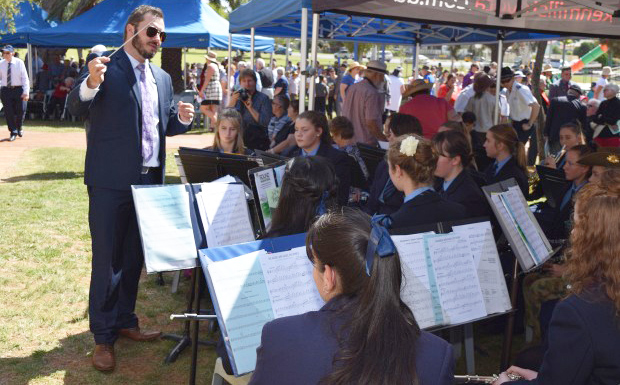
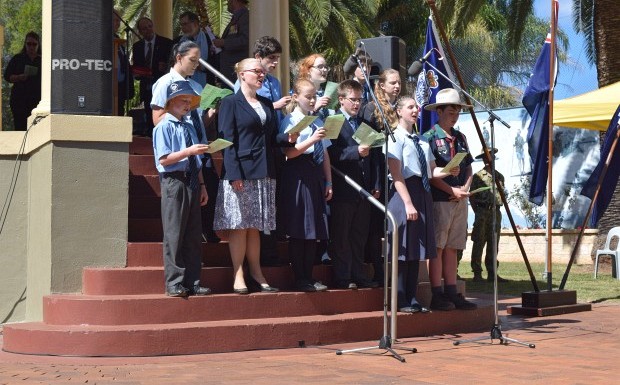
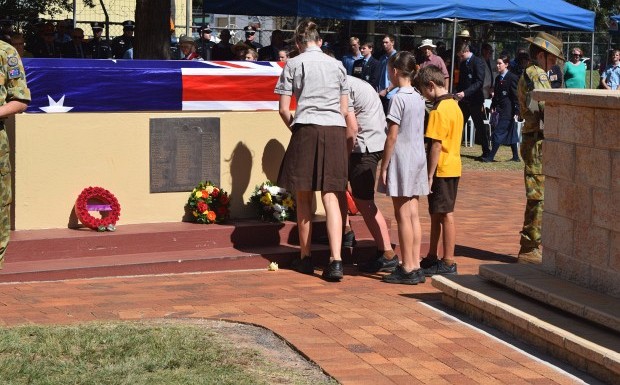
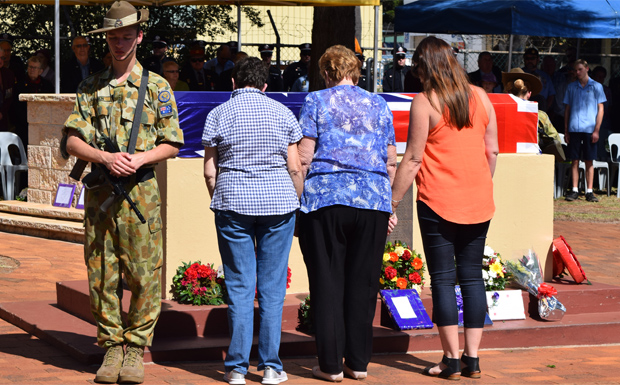
* * *
Maidenwell
A large number of local residents as well as students from Tanduringie State School turned out at the monument in Pool Street.
Maidenwell QCWA members served morning tea before the ceremony around the memorial.
Students from Year 5 and 6 presented “Letters From the Trenches” and then all students had the opportunity to place Anzac pictures and flowers at the foot of the memorial.
Guest speaker was Captain Andrew Clyne, from the Oakey Army Aviation Helicopter School.
* * *
Murgon
Murgon always puts on a spectacular Anzac Day parade, and 2017 proved to be no different.
The parade, which began at 9:45am, followed a morning of activities for RSL members and friends: a gunfire breakfast at Murgon RSL Club at 4:45am, followed by a Dawn Service at the Murgon War Memorial at 5:30am.
By 9:00am, residents had begun gathering in Queen Elizabeth II Park in Lamb Street to watch the parade and applaud the marchers.
A War World II BSA motorbike, owned by Windera military collector John Kratzmann, led the parade, followed by a string of military vehicles – also owned by Mr Kratzmann – many carrying war veterans.
The salute was taken by guest speaker, Brisbane psychiatrist Dr Geoff Rees, who specialises in assisting returned service personnel.
One of his grandfathers was wounded at Tobruk, while his other – who came from Merlwood – served at Gallipoli and in the Somme.
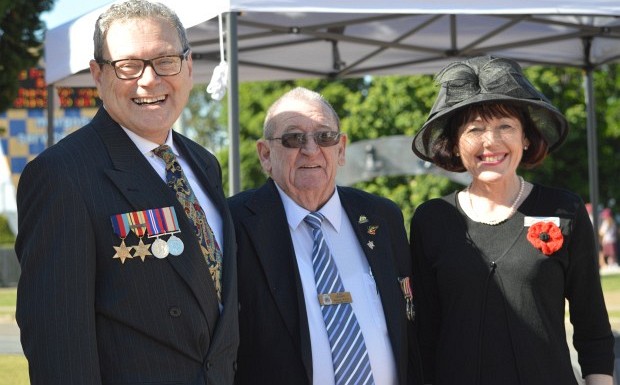
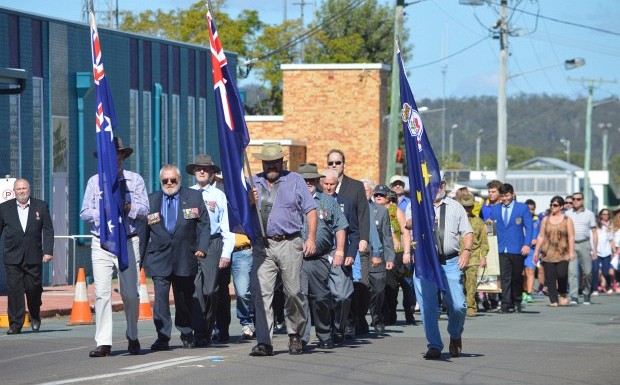

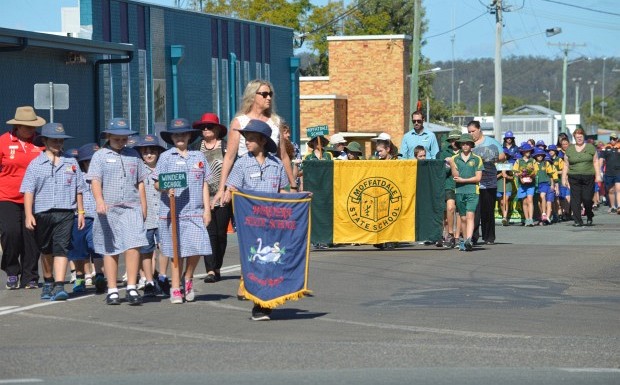
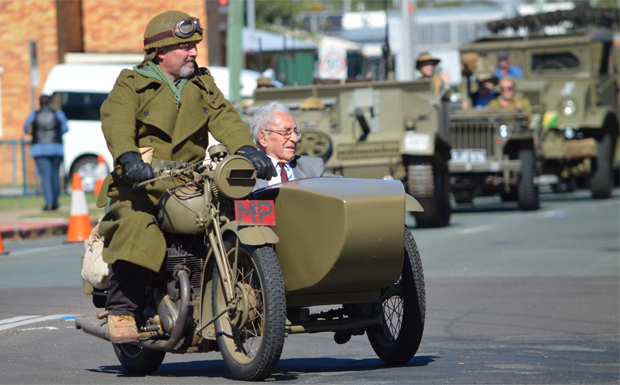
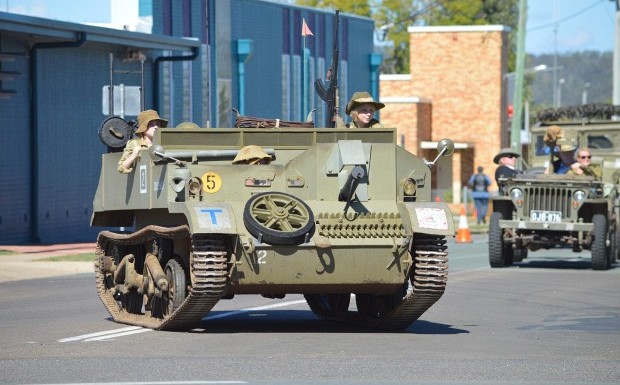
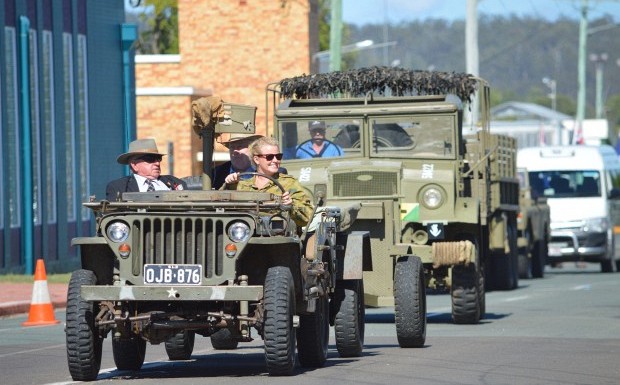
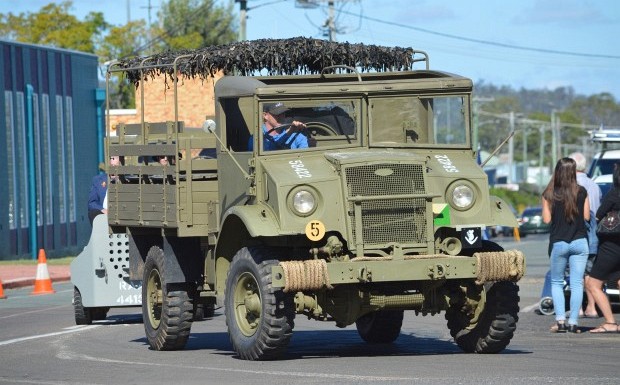
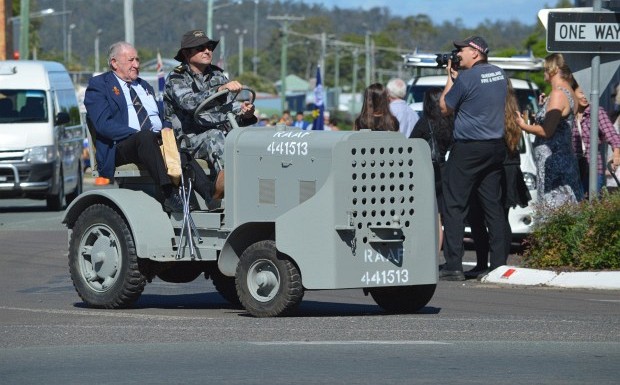
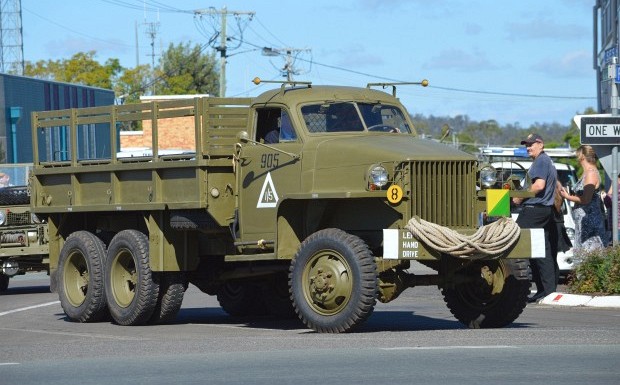
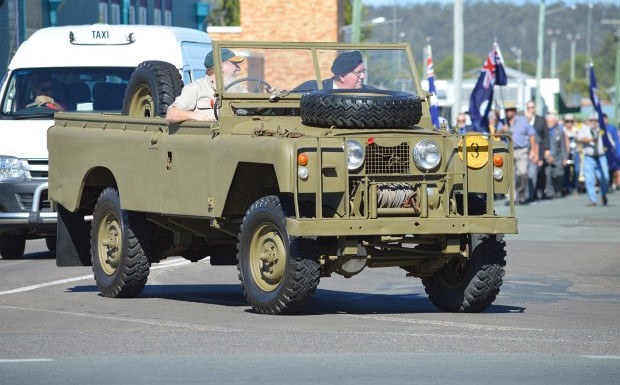
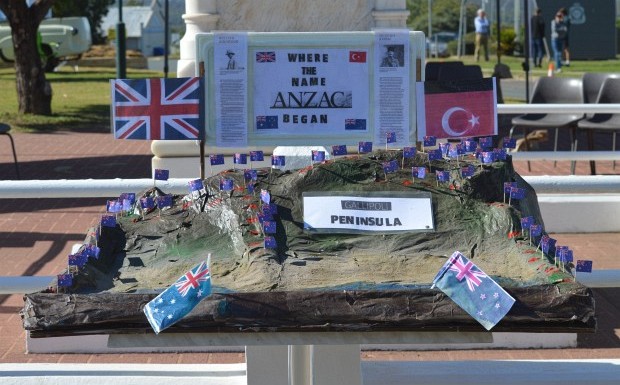
* * *
Nanango
A light mist shrouded marchers in Nanango’s Anzac Day parade as they wended their way down Drayton Street to the town’s War Memorial for the annual 9:00am Commemoration Service.
An estimated crowd of around 1000 looked on as cadets, ex-servicemen, members of the RSL Auxiliary and local school children marched in orderly formation, then took up positions along Henry and Drayton Streets while older participants sat on chairs in the park.
The service was compered by celebrant Lowrian Redsell.
She calmly guided a number of speakers from the RSL, the South Burnett Regional Council and local schools through a program that featured recollections of the lives of a sampling of local servicemen whose names are inscribed on the town’s War Memorial.
The Commemoration Service had been preceded earlier in the day with a Dawn Service, followed by a pilgrimage to veterans’ graves at Nanango Cemetery.
After the speeches were over, the commemoration concluded with wreath-laying by the community.
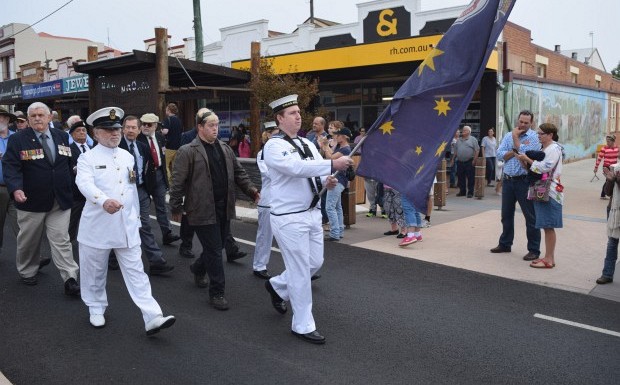
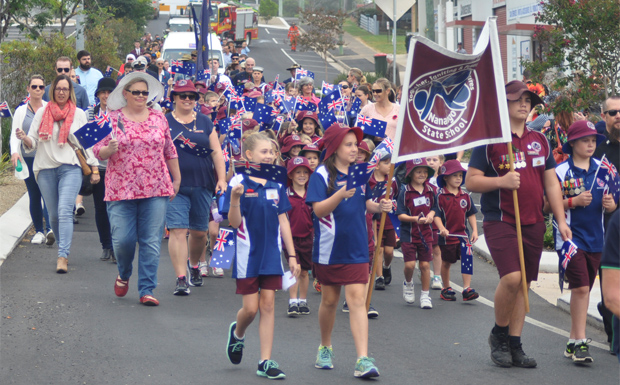
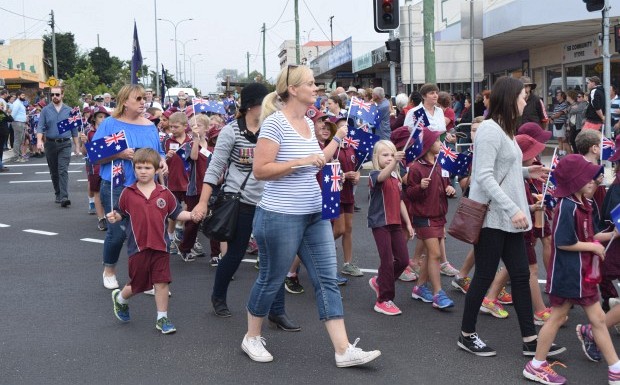
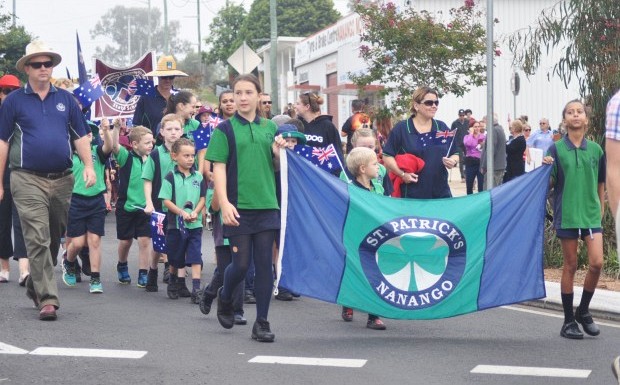
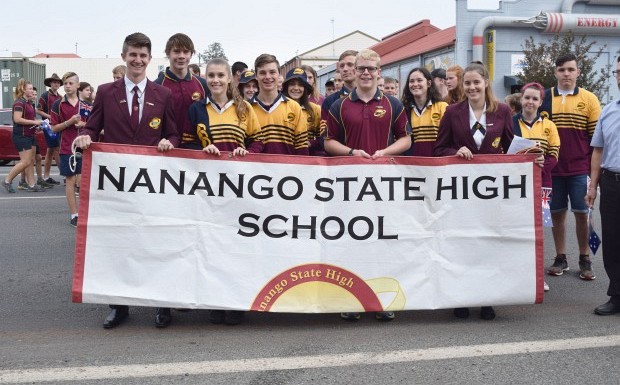
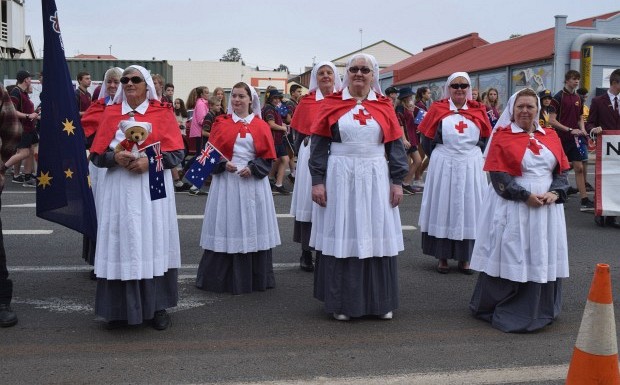
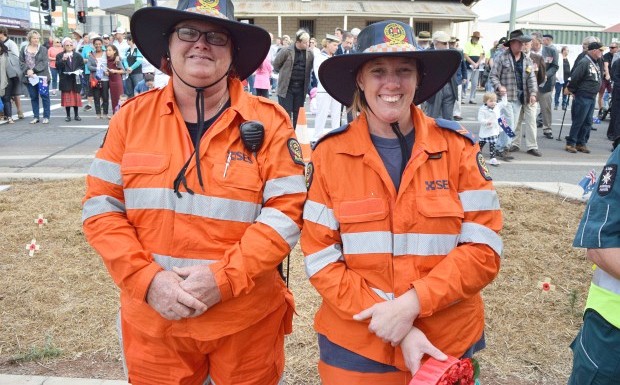
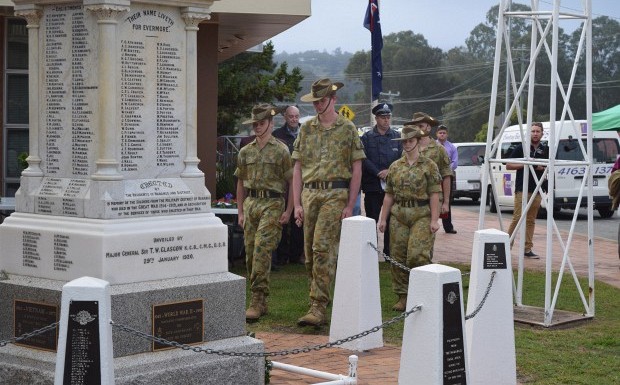
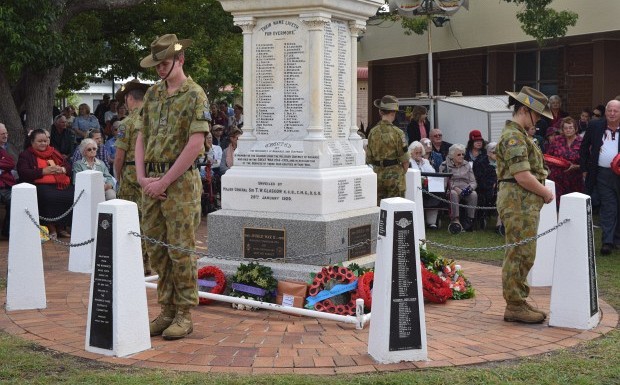
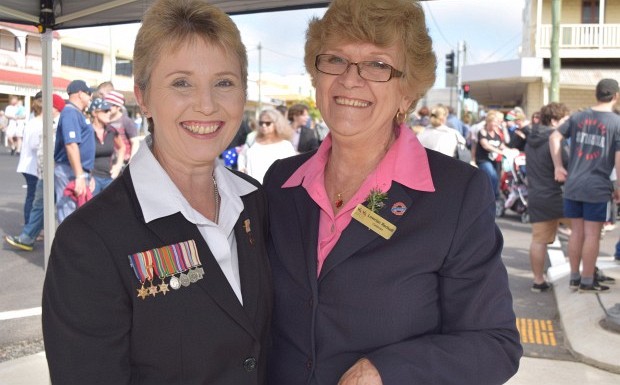
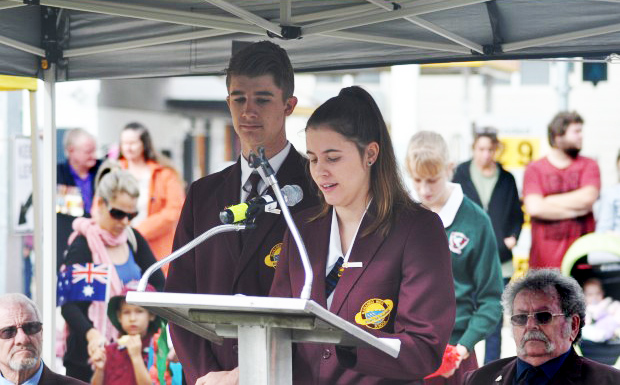
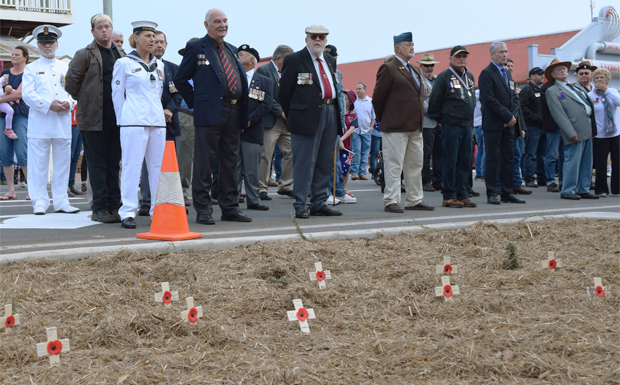
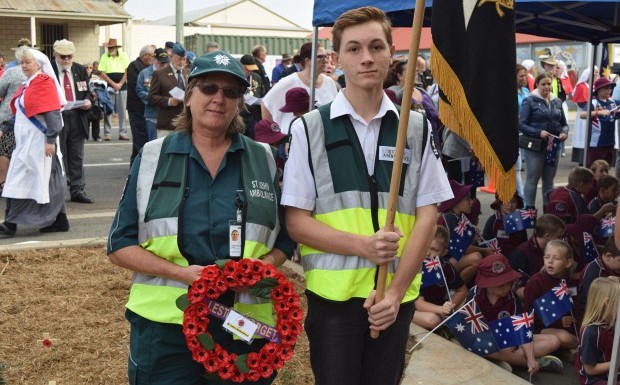
* * *
Proston
Proston residents marked Anzac Day with a solemn Dawn Service at the obelisk adjacent to the RSL Club rooms.
Members of the Proston Scout Troop joined community members and Cr Ros Heit in laying wreathes.
Proston P-9 State School held its Anzac Day ceremony on Monday.
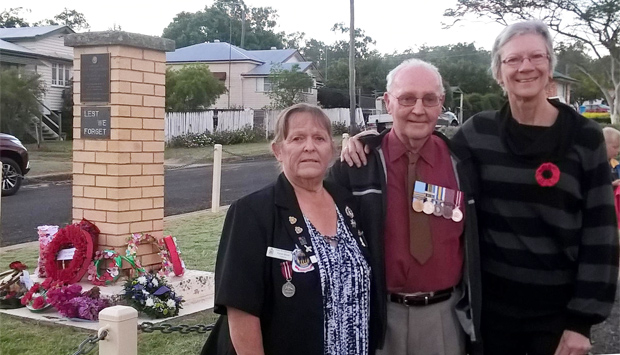
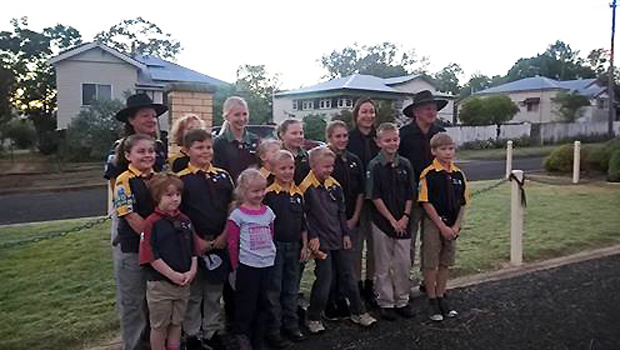
* * *
Wondai
Wondai’s Anzac Day began with a well-attended Dawn Service and then a pilgrimage to the War Service Graves at the Wondai Cemetery.
The main commemoration began at 10:00am with a march down Mackenzie Street to the War Memorial outside the Town Hall.
Guest speaker was well-known local resident Wally Knight who took his listeners back a hundred years to 1917 to bring home the reality of the losses experienced in Wondai (see above).
This was followed by a wreath-laying ceremony, the reading of the Honour Roll and a minute’s silence.
Wondai’s Anzac Day activities continued later at the racecourse with the town’s traditional Anzac Day meeting and the running of the Wondai Diggers Club Cup.
- Related article: Anzac Day Races Draw Bumper Crowd
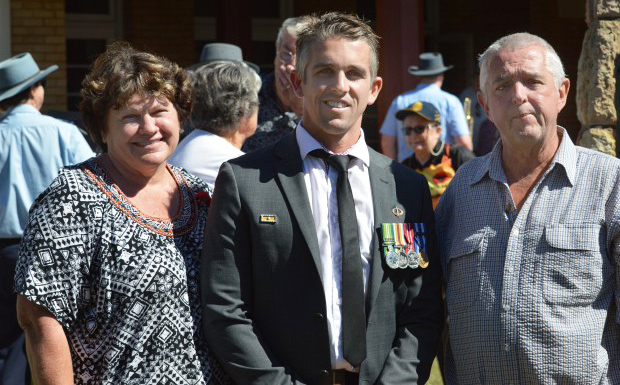
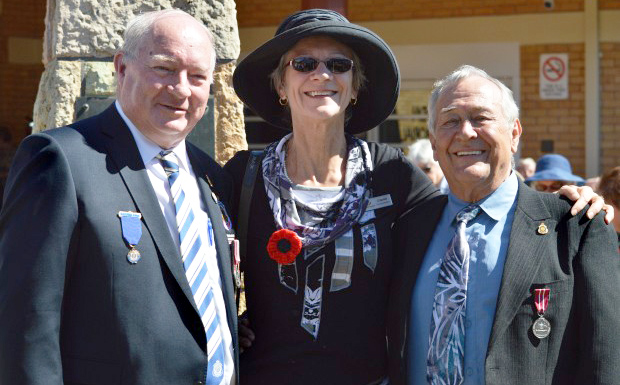
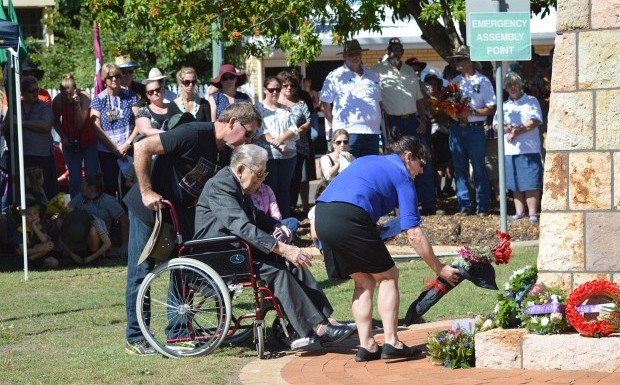
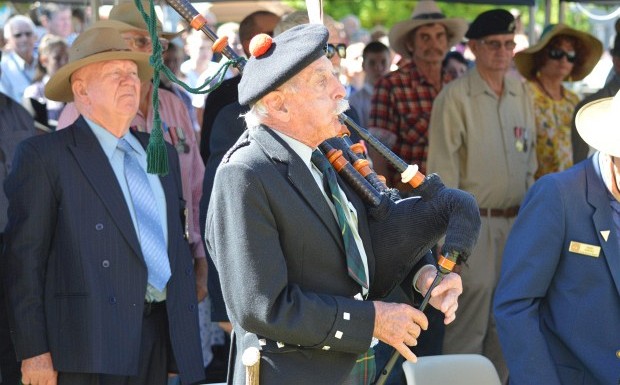
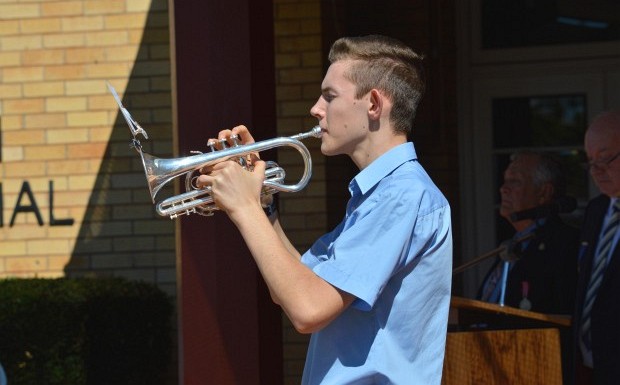
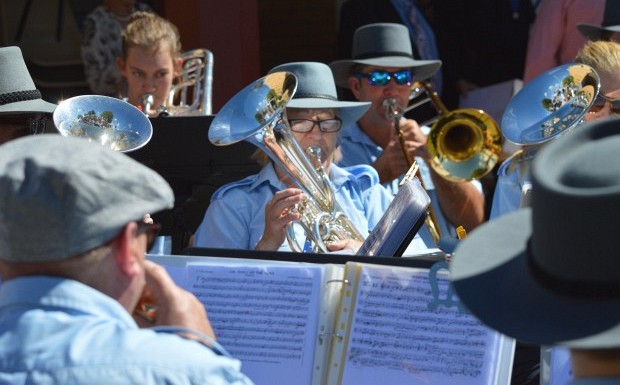
* * *
Wooroolin
Durong grazier – and recently appointed ABC Board member – Georgie Somerset was the guest speaker at Wooroolin’s Anzac Day commemorations.
Georgie shared the story of her grandfather, who served in the 6th Light Horse in Egypt. He transferred to the 12th Australian Infantry Battalion in France where he was gassed but survived to return home in 1917.
The morning at Wooroolin began in the traditional way with the Wooroolin State School bugle band leading the parade up the main street while police stopped traffic on the highway.
The young musicians were followed by children from Crawford State School and Wooroolin Scouts, and a small contingent of war veterans.
The Wondai and District Band brought up the rear of the procession.
The marchers then adjourned to the Wooroolin Memorial Hall for an observance ceremony chaired by Cr Ros Heit.
The commemoration included the loyal resolutions, the reading of the Honour Roll and the National Anthem.
Andrew Fitzpatrick, from the Wondai and District Town Band, played the Last Post on his trumpet and the Wooroolin Ladies Choir sang two hymns.
Wreaths were placed on a temporary memorial stand erected at the foot of the stage.
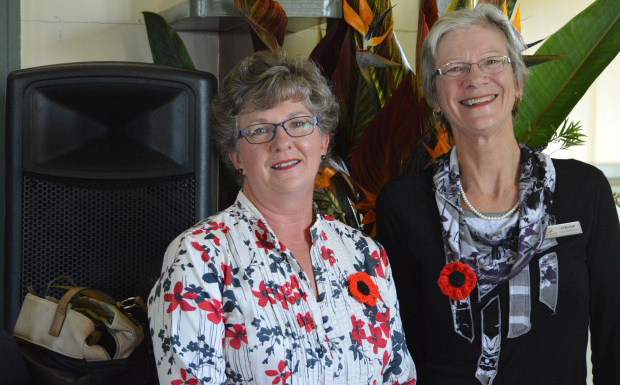


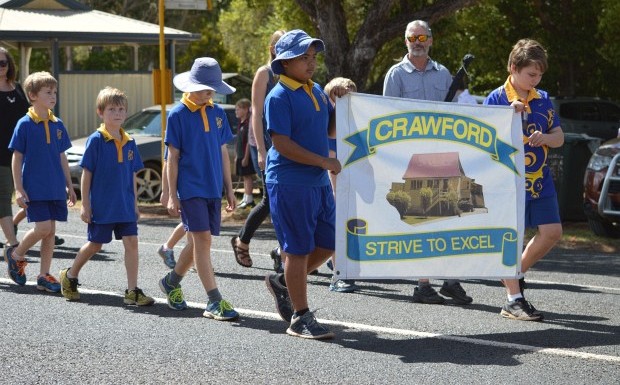
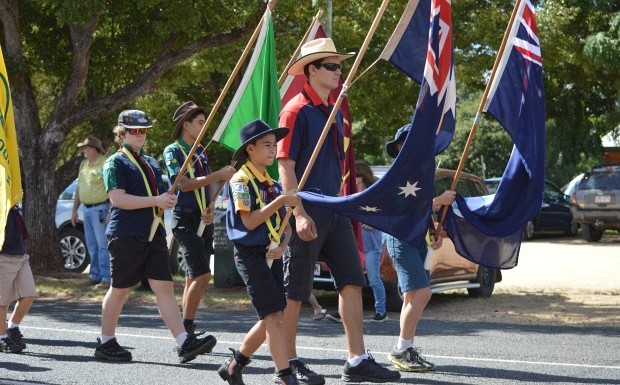

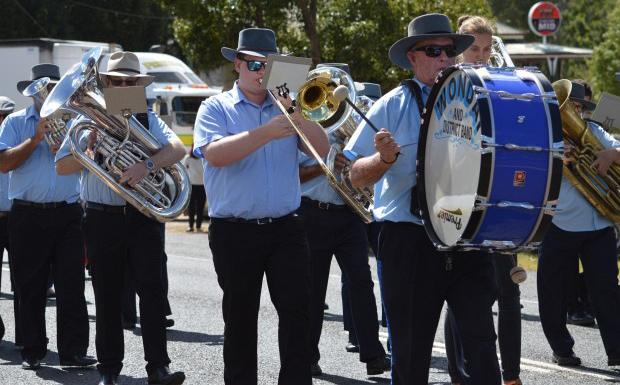
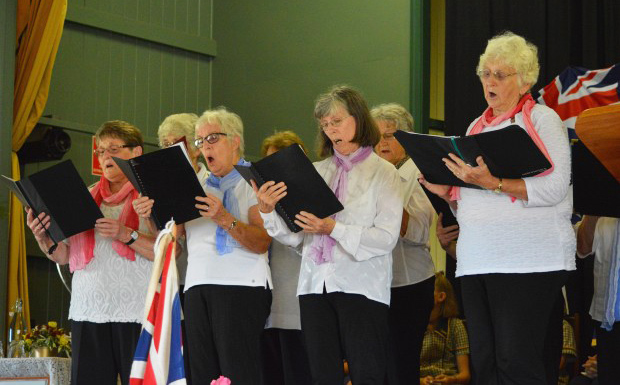
* * *
Yarraman
Yarraman residents had three opportunities to honour Australia’s war dead on Anzac Day.
A Dawn Service was held at the Cenotaph at 6:00am, followed by a pilgrimage to the war service graves at the Yarraman Cemetery where the names of service personnel buried there were read.
About 10:45am, marchers assembled to attend the main service at the Cenotaph at 11:00am for a commemorative service, which was followed by a community lunch in Memorial Hall in Browne Street.








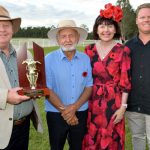
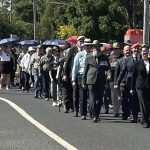
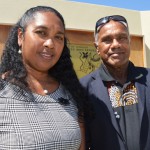
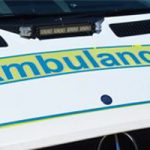
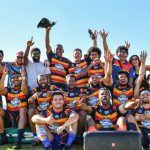












Wow, a lot of work went into writing this story,